Recently, on a TV news channel while covering an event on Kashmir, reporting from Srinagar the reporter said that ‘Though Kashmiri Pandits have left the Valley, they had cornered most of the jobs in Kashmir’.
It may be pointed out that the militant organisations and their overground supporters had and continue to carry out massive disinformation campaign to justify violence against Kashmiri Pandits, which ultimately led to the community’s exodus from the Valley. However, the reality is different and the issue has been covered in detail by Col Tej K Tikoo, Ph.D. in his much acclaimed book, Kashmir; its Aborigines and Their Exodus. Here are the excerpts:
The argument that it was economic deprivation of Kashmiri Muslims which forced the poverty-laden youth to take up arms, has been repeated ad nauseam by the vested interests. Pakistan and its sympathisers propagated this argument to camouflage the real intentions of the Islamists. The Indian political parties that supported this view did so to protect their vote banks. Population figures of various communities in the state, based on 1981 census, are given below. As the militancy broke out in Kashmir some years later, these population figures will serve as a benchmark to assess the ‘truth’ of the economic reality of the state.
The Hindu population shown above did not include 2,50,000 Hindu and Sikh refugees, which formed nearly 4.2 per cent of the population.
The total population of Hindus, Sikhs and Buddhists (including 4.2 per cent of the refugees) was 40.18 per cent. Per capita growth from 1970–71 to 1985–86 went up from Rs. 548 crores to Rs. 2204 crores at current price and from Rs. 548 crores to 683 crores at constant price of 1970–71. Within the state, Kashmir with its overwhelming Muslim population, was allotted between 65–69 per cent of the financial resources, compared to 31–35 per cent to Jammu and Ladakh together.
…the militant organisations and their overground supporters had and continue to carry out massive disinformation campaign to justify violence against Kashmiri Pandits…
The Kashmiri Muslims owned 97.4 per cent of the agricultural land. The Hindus and other minorities had to be content with 2.6 per cent of the remaining land, though they comprised 11 per cent of the population in Kashmir. The former owned 96 per cent of the fruit orchard acreage in Kashmir, against 2.8 per cent by Hindus. Similarly, the Kashmiri Muslims owned 98.7 per cent of karewas (highlands), growing saffron, compared to 0.03 per cent owned by Hindus. Besides this, the export of dry fruit (almonds and walnut) and precious walnut and willow wood, was completely monopolised by the Muslims. The Hindus had almost no share in it. There were nearly 48,100 orchard holdings, employing an estimated 800,000 people, out of which Kashmiri Pandits formed a minuscule number estimated to be less than 0.5 per cent. Due to its complete monopoly of Kashmir’s agricultural sector, the Kashmiri Muslims appropriated 94 per cent of the subsidy paid by the state on horticulture, agriculture, agricultural implements, fertilisers, pesticides, etc. Hindus received less than 2.4 per cent of this subsidy.
98.9 per cent of the industries using electric power were owned by Muslims, with Hindus owning just 0.02 per cent. Same situation existed in handloom and handicraft industry in Kashmir, which was almost entirely owned by Muslims. This industry provided employment to 91,941 persons, nearly all of them Muslims. Hindus formed 0.4 per cent of the total employees. In 1985–86, when Muslims in the valley were getting radicalised, the membership of the handlooms and handicraft cooperative societies stood at 17,776. Out of this, only 0.3 per cent was owned by Kashmiri Hindus. In the same year, out of the 46, 293 industrial units registered with the directorate of industries in Kashmir province, 98.7 per cent were registered in the name of Muslims and 0.01 per cent in the name of Hindus. 98.8 per cent of the total of 28,110 employees of the industries registered under Khadi and Village Industries Board, were Muslims.
Out of a total of 450,000 government/semi-government employees in the State, 330,000, come from the Valley.
In the absence of railway network in the state, road transport played a vital role as the primary source of travel and communication within and outside the Valley. Even in this sector, the ownership of the transport and transport companies was monopolised by Muslims, with Sikh ownership standing at 4.2 per cent. The Hindus of Kashmir were negligible stakeholders in the transport sector. In 1985–86, even in the state-owned Jammu and Kashmir State Road Transport Corporation (JKSRTC), Kashmiri Hindus accounted for only 0.8 per cent of its total number of 6,434 employees. The state government had floated some schemes for providing loans (and subsidies on such loans) for establishing industries, self-employment enterprises, exports unit, handicraft and small scale units (and purchase of land for such enterprises, etc.). The beneficiaries of these schemes were almost entirely Kashmiri Muslims, with Hindus receiving barely 0.1 per cent of the entire amount.
Boats of various types and sizes played an important role in transportation through inland waterways and in tourism industry of the state. The entire fleet of these boats, including the luxury houseboats, was owned by Muslims. Number of various types of boats existing and the employment provided by these in 1985–86, are given in the chart below. Today (July 2011) the number of luxury houseboats is little over 1,200.1
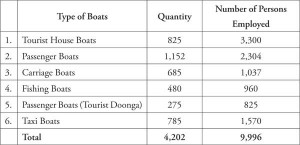 The tourist industry in Kashmir also depended heavily on the network of hotels. 96 per cent of these hotels were owned by Kashmiri Muslims, compared to 2.2 per cent owned by Hindus.
The tourist industry in Kashmir also depended heavily on the network of hotels. 96 per cent of these hotels were owned by Kashmiri Muslims, compared to 2.2 per cent owned by Hindus.
Even in the awarding of contracts for various developmental projects, including public works, Kashmiri Hindus, at an average, received about 4 per cent of these. Similarly, till 1979, when the contracts for the exploitation of forest products were given to private individuals, the Hindu share of receiving these contracts was only 6.2 per cent. After 1979 these were nationalised. Other income generating sources, like issue of licenses for quarrying, mining of marble, establishing brick kilns and manufacture and export of carpets and shawls, were completely in the hands of Kashmiri Muslims.2
During militancy, Kashmir has prospered economically and is far better placed than most other states of India. Besides Punjab, Kashmir is the only other place, where most agricultural operations are undertaken by hired labourers…
For years the vested interests carried out a sustained propaganda that the State of Jammu and Kashmir lagged behind other states of India economically, as it faced step-motherly treatment from the Central government. However, the facts indicated otherwise. In the crucial years preceding the outbreak of violence in Kashmir, the state was (and continues to be) way ahead of other states, on every parameter that determines the economic well-being of a state. In fact, Kashmiris themselves find the ‘theory of their economic deprivation’ as the cause of their uprising, as laughable. After all, economically deprived people are not voracious meat eaters, as Kashmiris are. “On an average, 3.5 million goats are slaughtered annually for consumption in Kashmir.”3
During militancy, Kashmir has prospered economically and is far better placed than most other states of India. Besides Punjab, Kashmir is the only other place, where most agricultural operations are undertaken by hired labourers from Bihar and Orissa since long. Among other things, it is the only place where education is free from elementary to professional and university level; where per capita saving and per capita consumption of animal proteins is the highest in India; it also ranks highest in the expenditure incurred on clothing. It is also, perhaps, the only place where everybody owns a house. Some other parameters too are revealing. According to the study carried out by National Sample Survey Organisation in 2009, the average household has assets worth almost Rs. 11,00,000 the highest in the country. Kerala follows with the average household assets being worth a little over Rs. 7,51,000. Experts say that even though there are no major industries in the state, income is more evenly distributed in Jammu and Kashmir than in any other part of the country. Says Haseeb Drabu, former Chairman of Jammu and Kashmir Bank, “It’s the only place in the world where the most radical land reforms were initiated in a non-communist regime. It even pre-dates the land reforms carried out in Kerala. Therefore, you find that average Kashmiri’s asset base is much better than the average person in the rest of the country. Agrarian sector, especially horticulture, is doing well. Land has provided a resilient economy.”
Even though the tourist industry crumbled due to rising militancy in nineties, the economy did not collapse…
It was believed that economically Kashmir is so heavily dependent on tourist industry that the disturbed conditions during the past two decades would destroy its economy. But these beliefs have been proved unfounded. The disturbed conditions in the valley have, if anything, improved the economic well-being of the people in the state. Even though the tourist industry crumbled due to rising militancy in nineties, the economy did not collapse and land prices continued to rise. “There was an impression that Jammu and Kashmir survives only on tourism, and once tourism goes down, the economy will crumble. It’s not so.
There is very large agrarian sector, which has done very well,” said Haseeb Drabu. “Since the beginning of militancy in 1990, the state has managed to get the lion’s share of Central resources; Rs. 35,571.3 crores in grants and assistance.”4 “Between 2000–2003, it got Rs. 13,188 crores which is more than three times what India’s poorest state, Bihar, got; Rs. 4,047 crores. When you consider that of the Rs. 14,085 crores net resource transfer by the centre, Rs. 13,188 crores was grant, you will get an idea of the magnitude of dole that Jammu and Kashmir gets. A similar economic revival plan for Bihar would amount to Rs. 47,458 crores!”5 (See Table 1 and 2 below):-
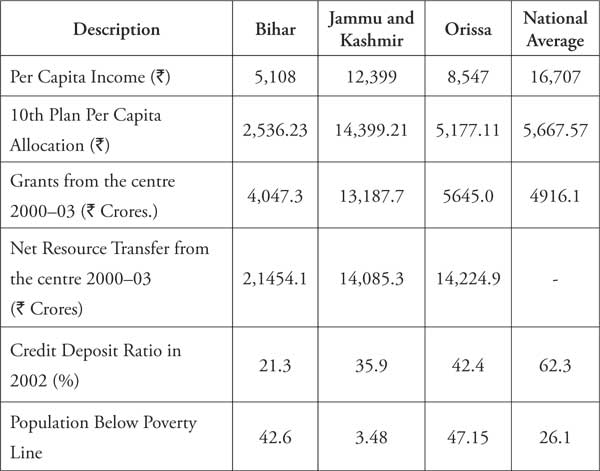
Table 1: Economic Profile. Source: Planning Commission, Government of India, Reserve Bank of India, State Finances 2002–03 and Statistical Outline of India 2002–03.
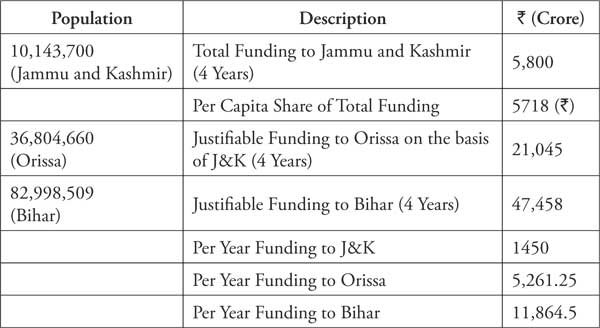
Table-2: Prime Minister’s Economic Package applied to two Most Backward States. Source: Census of India 2001 and Calculation on the basis of available figures.
A Kashmiri understands quite well the massive economic benefits that accrue to him as a result of his being part of India. “A Kashmiri gets eight times more money from the centre than citizens from other states. While per capita central assistance to other states moved from Rs. 576.24 in 1992–93 to Rs. 1,137 in 2000–2001, that of a Kashmiri spiralled from Rs. 3,197 to Rs. 8,092.”6
“To put this in perspective; if the aid given by the Central government to the State were to be distributed to each family (of 5 persons); they would get Rs. 40,460 every year. Per capita consumption has also shot up from Rs. 134/month in the eighties to Rs. 746/month in 2000.”7 It is interesting to note that Jammu and Kashmir has the lowest poverty level in India: in 1990, the percentage of people ‘below poverty line’ (BPL) was 25.17 per cent, which dropped to 3.48 per cent in 2000. Compare this with 26.10 per cent in whole of India. This, despite the fact that the State’s contribution was less than 1 per cent of the GDP in 2000–2001. “In 2001–2002, the state spent Rs. 7516.6 crores, of which Rs. 4,577, (or 60 paise of every rupee spent came from centre). The state’s non-developmental expenditure was Rs. 2,829 crores, including its salary bill of Rs. 1,193 crores, while its own revenues were barely Rs. 1,095 crores. The state could not have paid even the wages of its employees without the centre’s help.”8 In other states, central assistance comprises 70 per cent debt and 30 per cent aid; in Jammu and Kashmir it is 90 per cent aid and 10 per cent debt. Later, even this 10 per cent debt was converted in to aid. In fact, the centre is funding the complete Five-Year-Plan of Rs. 11,400 crores.
The state is also quite well off in other socio-economic fields as indicated by the following facts:-
- Its literacy level at 64.8 per cent and sex ratio of 923/1000 is almost at par with the national level of 65.4 per cent and 933/1000 respectively.
- Its birth rate of 19.9/1000 is lower than the national average of 25.8/1000. So is its death rate; 5.4/1000 for the state compared to 8.5/1000 of the national average.
- Jammu and Kashmir’s infant mortality rate (45/1000) is also superior to the national average (68/1000). See Table:-
The official per capita income of Jammu and Kashmir in 2002–2003 was Rs. 12,399. This was lower than the national per capita income of Rs. 16,707. But it is much higher than many other states; Bihar — Rs. 5108, Orissa — Rs. 8547. “For the 10th Five Year Plan, the state got a per capita allocation of Rs. 14,399 whereas Bihar and Orissa got Rs. 2,536 and Rs. 5177 respectively, while the national average was only Rs. 5668.”9
The Jammu and Kashmir Government employs 350,000 people, which translates to 34.5 government employees for every thousand persons. Rajasthan Government on the other hand, employs less than double the number of people, despite being about five and half times bigger than Jammu and Kashmir in terms of population.

Table 5: Government Employee Status. Source: Census of India and Statistical Outline of India, 2003–04 *www.jammukashmir.nic.in. (Website of Govt. of J&K). **Rajasthan Plans Computer Training for Employees, 8.11.2004; Indo-Asian News Service, Jaipur.
“In 2002–2003, it raised a mere Rs. 936 crores by way of taxes and had total non-tax revenue of Rs. 4,745 crores. Bihar collected Rs. 2,814 crores by way of taxes and had total non-tax revenue of Rs. 2,062 crores. Quite clearly, therefore, the nation’s munificence is lavished upon Jammu and Kashmir.”10 This appears quite unfair considering the fact that “the State government’s accounts have not been audited for over a decade. No one knows what was spent where and who got what.”11

Table-6: Tax Mobilization in States in 2002-03 (Rs. in Crores). Source: State Finances, Reserve Bank of India, 2002–03. Note: Tables 1 to 6 have been reproduced from a report authored by Centre for Policy Alternatives (CPAS); a privately funded think-tank focussed on the study and review of Public Policy in India
All security-related expenditure of the State is also reimbursed to the State by the centre. 5,50,000 security forces personnel deployed in the State have also contributed to the flourishing economy of the State. To add to their (Kashmiris) income, “Income Tax and Sales Tax are hardly ever paid and rarely demanded. The phenomenon pre-dates terrorism,” says Anand K Sahay.12
Jammu and Kashmir did not bank with Reserve Bank of India, but with its own Jammu and Kashmir Bank, wherein it owned majority stake and from which it could obtain overdrafts.
According to National Sample Survey Organisation, urban parts of Jammu and Kashmir have prospered during the period of militancy. Jammu and Kashmir also has many other advantages compared to other states of India. It enjoys a far greater degree of autonomy than any other state in India through its own constitution and privileges guaranteed by Article 370 of the Constitution of India. Jammu and Kashmir did not bank with Reserve Bank of India, but with its own Jammu and Kashmir Bank, wherein it owned majority stake and from which it could obtain overdrafts. Recently this arrangement has undergone a change. Through an agreement that the State reached with the Reserve Bank of India on January 21, 2011, the latter “will undertake all its general banking business and act as its sole agent for investment.”13 This agreement came into effect from April 1, 2011.
As would be evident, terrorism itself has created a huge economy and powerful lobby of vested interests. For them, keeping the pot boiling makes great economic sense.
Valley’s Dominance of State’s Economy and Politics
Ever since its accession to India, the political dispensation governing Jammu and Kashmir, has been completely dominated by the of State’s Muslim majority legislators who belong to the Valley. Irrespective of their party affiliations Kashmiri Muslim legislators zealously guard the interests of the Valley’s Muslims. The Central government has all along been a willing and enthusiastic accomplice in this communal agenda of theirs. To quote an example, on March 25, 2011, a government order entitled Dogras of the State (basically from Jammu) to obtain a Dogra Certificate which envisaged some relaxation in rules governing their recruitment into Central Para Military Forces, in terms of some physical measurements. However, the separatists created a hue and cry, terming it as a prelude to creating a Duggar Desh (Dogra State).Taking a cue from the separatists, the Muslim legislators then ganged up, with the active connivance of the Central government, to have the order revoked a month later; on April 28, 2011. That the State government had bowed in front of the separatist’s communal agenda, supported by the Indian Government, was not the first such instance. It is because of this ganging up by Kashmiri Muslim legislators that the decks in every sector within the State are tilted heavily in favour of Kashmir.
Jammu comprises an area which is 70 per cent larger than Kashmir and has 45 per cent of the State’s population. But Jammu has only 37 seats in the State Legislative Assembly, whereas Kashmir has 46. Jammu returns one member to the state legislature for 90,000 people, whereas in Kashmir, it is 73,000 people who return one such member. This, despite the fact that Jammu region has more registered voters (30,59,986) than the Valley (28,85,555). Average size of Parliament and Assembly seat (in terms of voters) in Jammu is 12,31,000 and 66,600 respectively; in the Valley these figures are 8,03,000 lakh and 52,400 respectively. Kashmir gets to elect three members for the Parliament and Jammu only two.




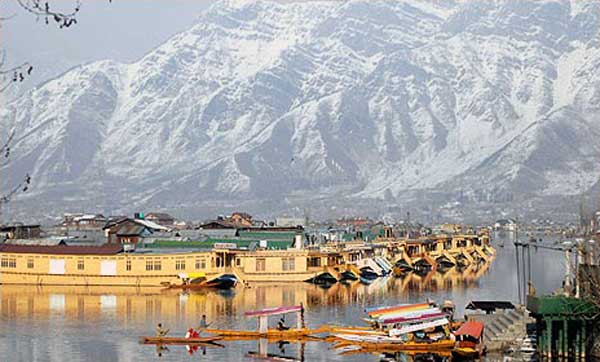


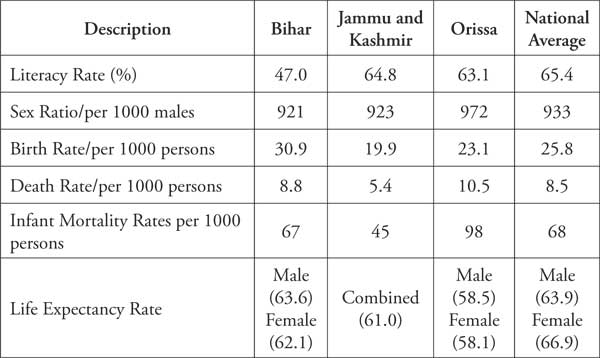
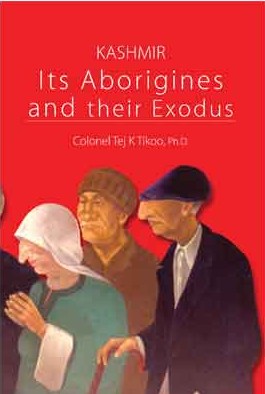

article clearly shows how shrewdly porki sympathizers in Kashmir conspired against Kashmiri Pandits and we had no clue what was going on there .all the political parties at center are responsible for Ignoring plight of Kashmiri Pandits my heart goes out for them ,i am really sorry as an Indian and as an Hindu